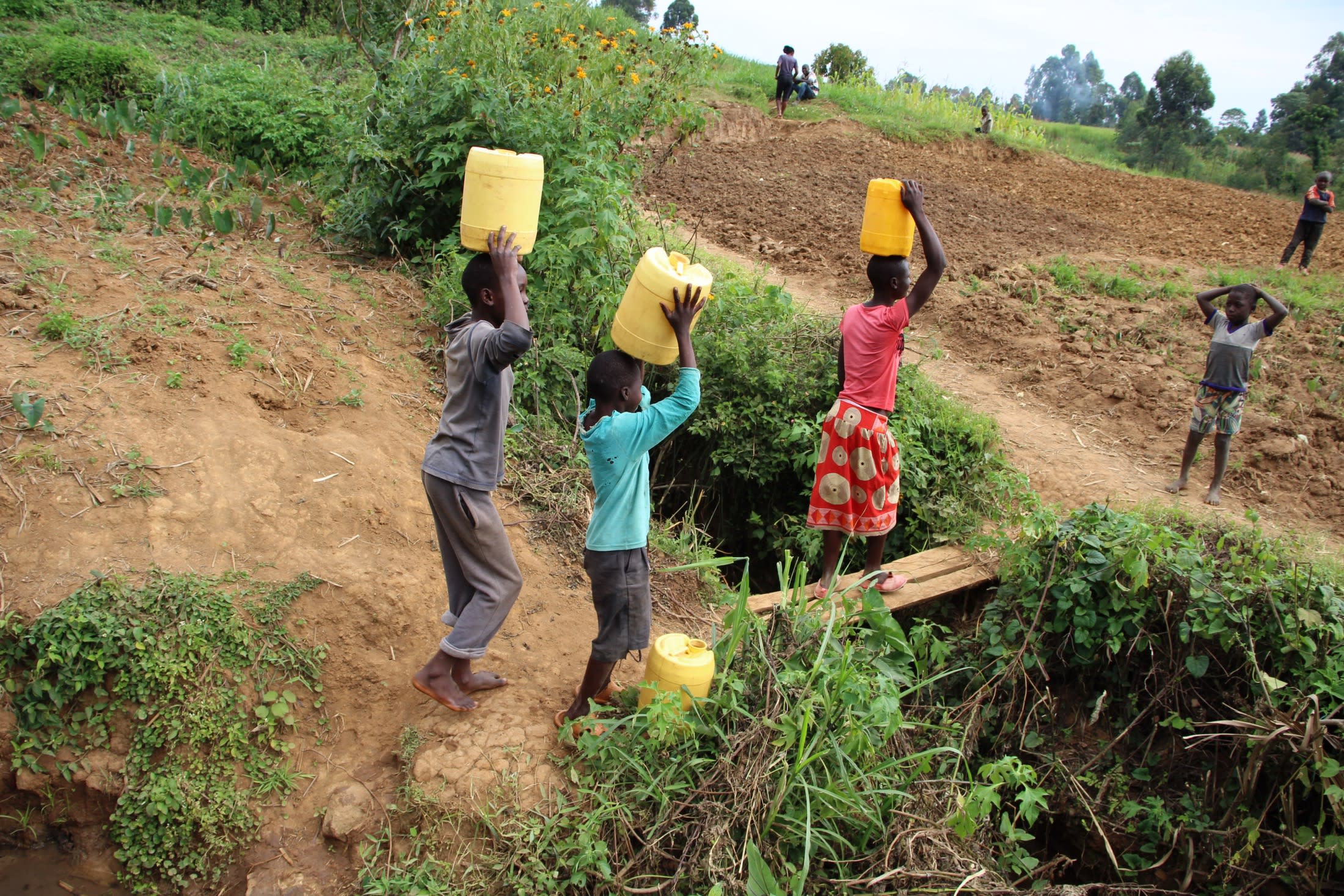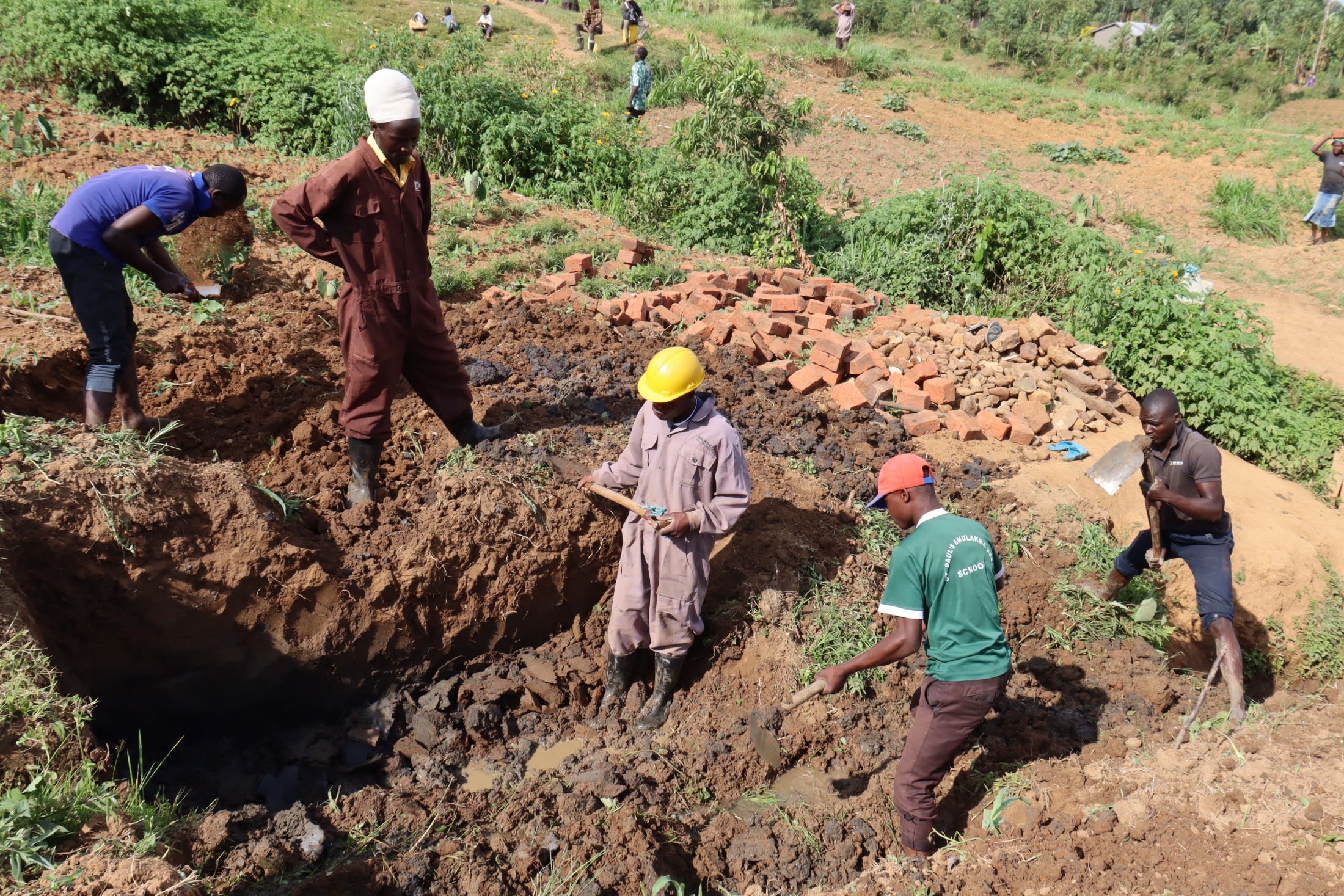The women and girls who live in Lusumu carry the primary responsibility of collecting water for the 224 residents who rely on Weyusia Spring.
The spring has consistent water flowing, but dirt and grass surround it and the water pipe is challenging to access, tucked under a ledge. People must balance on a rock while letting their container fill with water, which is often brown and murky.

The slow process creates tension amongst community members, often causing quarrels while people wait. Once the container fills, they lift their heavy jug and navigate back across a small plank bridge over a ditch to carry their water home. It is a tiring and risky process.

Mercy K. (in the photo below), 12, shared, "The current water situation has really affected me and other children. We have witnessed our parents exchange badly because of water. That being the case, there's no respect between children and elderly people."

The spring is open to contamination and not safe for human consumption. Drinking dirty water has led to community members suffering from water-related illnesses and needing medical care that steals valuable finances required to meet other daily needs.
"Since our spring is open, it's very hard for us to get clean water during this rainy season. The colour of our water is brown because of the soil erosion taking place uphill. We now rely on rainwater, which is not enough," said Karen Abwara (seen below), a 32-year-old farmer.

The people of Lusumu need their spring protected to have a reliable, clean water source that will meet the entire community's needs. Then they can focus on staying healthy, improving their daily lives, and rebuilding relationships with one another.
What We Can Do:
Spring Protection
Protecting the spring will help provide access to cleaner and safer water and reduce the time people have to spend to fetch it. Construction will keep surface runoff and other contaminants out of the water. With the community's high involvement in the process, there should be a good sense of responsibility and ownership for the new clean water source.
Fetching water is a task predominantly carried out by women and young girls. Protecting the spring and offering training and support will, therefore, help empower the female members of the community by freeing up more of their time and energy to engage and invest in income-generating activities and their education.
Training on Health, Hygiene, COVID-19, and More
To hold trainings during the pandemic, we work closely with both community leaders and the local government to approve small groups to attend training. We ask community leaders to invite a select yet representative group of people to attend training who will then act as ambassadors to the rest of the community to share what they learn. We also communicate our expectations of physical distancing and wearing masks for all who choose to attend.
The training will focus on improved hygiene, health, and sanitation habits in this community. We will also have a dedicated session on COVID-19 symptoms, transmission routes, and prevention best practices.
With the community's input, we will identify key leverage points where they can alter their practices at the personal, household, and community levels to affect change. This training will help to ensure participants have the knowledge they need about healthy practices and their importance to make the most of their water point as soon as water is flowing.
Our team of facilitators will use a variety of methods to train community members. Some of these methods include participatory hygiene and sanitation transformation, asset-based community development, group discussions, handouts, and demonstrations at the spring.
One of the most important issues we plan to cover is the handling, storage, and treatment of water. Having a clean water source will be extremely helpful, but it is useless if water gets contaminated by the time it is consumed. We and the community strongly believe that all of these components will work together to improve living standards here, which will help to unlock the potential for these community members to live better, healthier lives.
We will then conduct a small series of follow-up trainings before transitioning to our regularly scheduled support visits throughout the year.
Training will result in the formation of a water user committee, elected by their peers, that will oversee the operations and maintenance of the spring. The committee will enforce proper behavior around the spring and delegate tasks that will help preserve the site, such as building a fence and digging proper drainage channels. The fence will keep out destructive animals and unwanted waste, and the drainage will keep the area's mosquito population at a minimum.

 Protected Spring
Protected Spring
 Rehabilitation Project
Rehabilitation Project







































